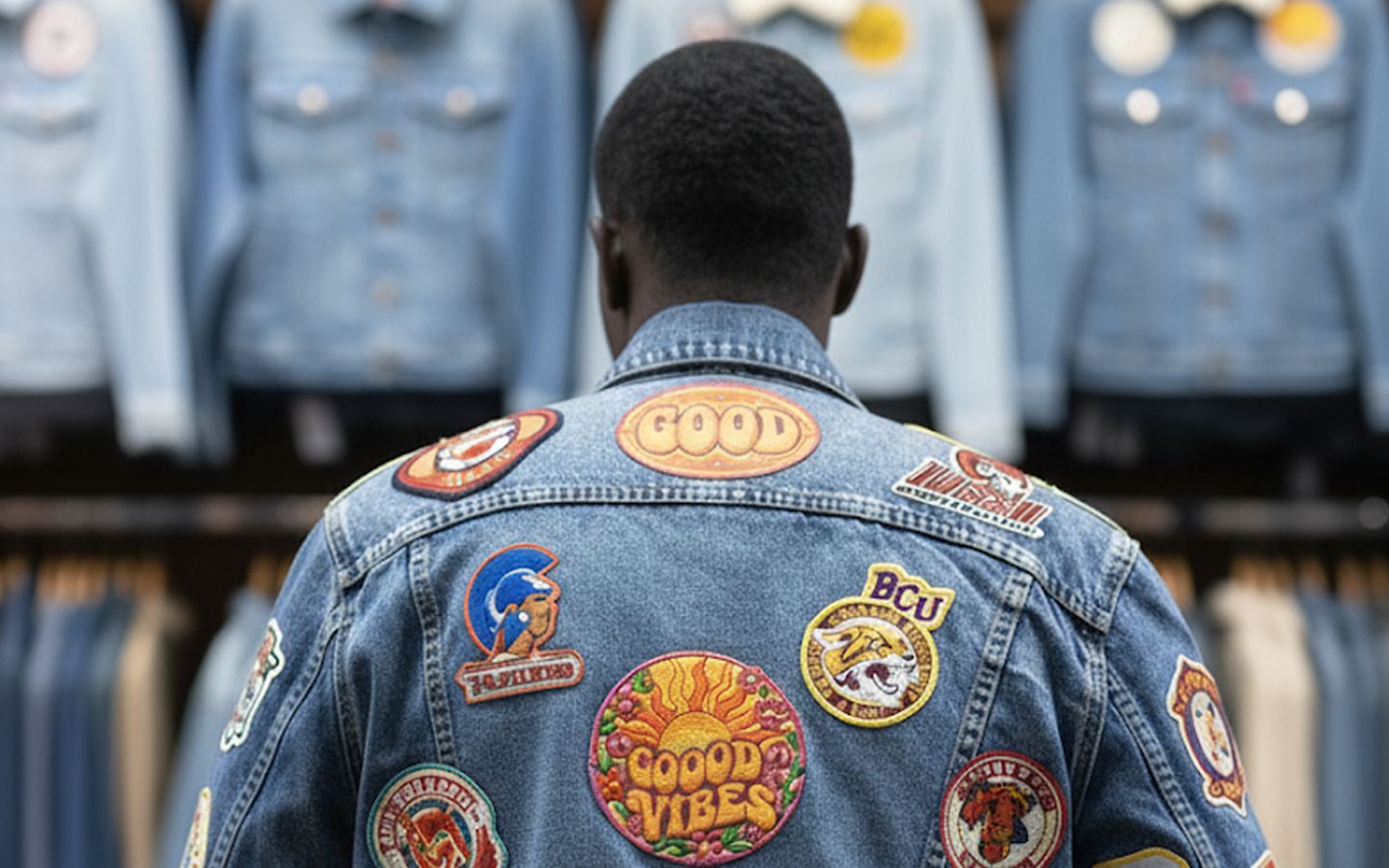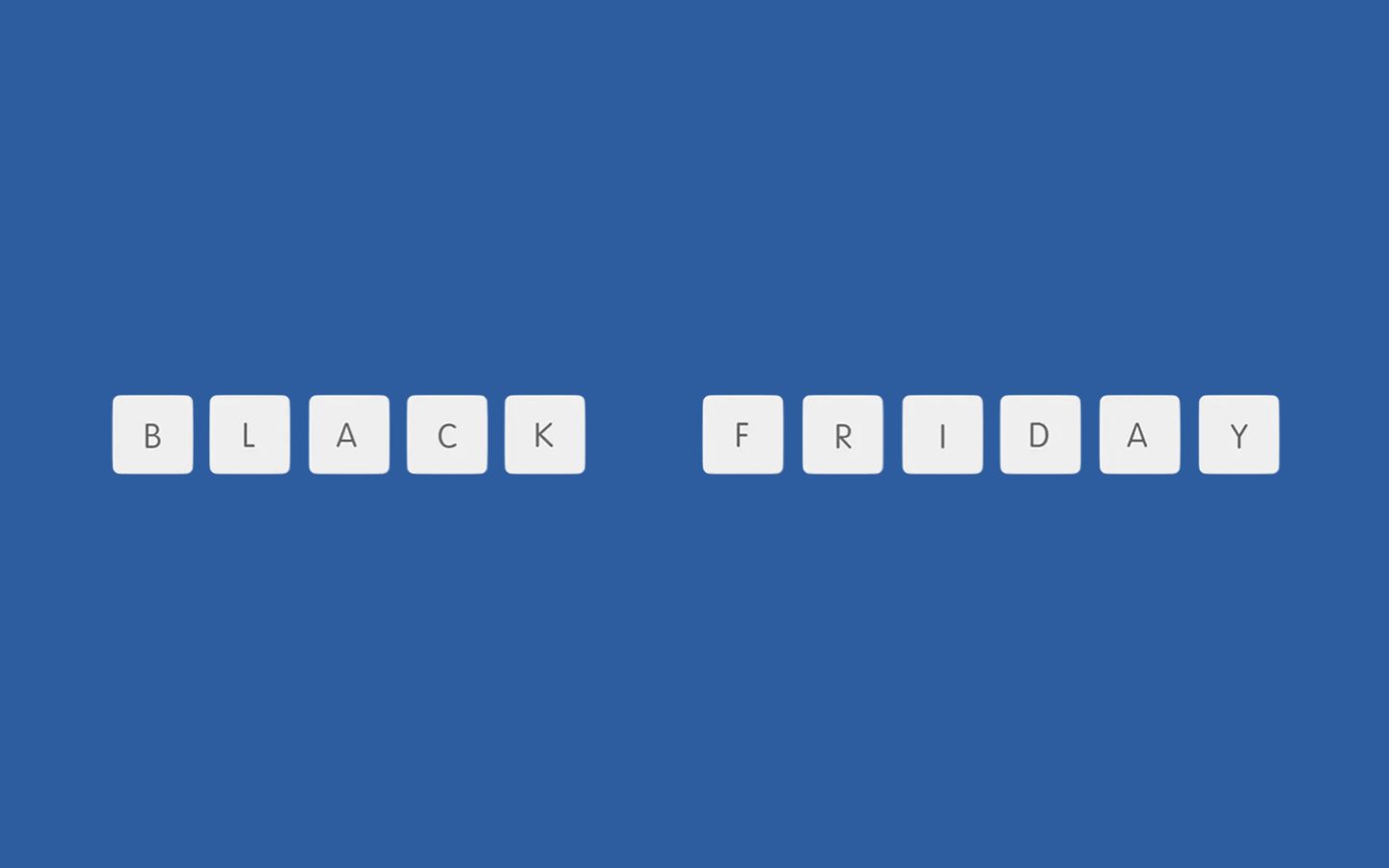Levi’s embroidered denim is back
Few names in fashion carry the same weight as Levi’s. Their denim has crossed subcultures, workwear, and runways without ever losing its relevance. Now embroidery is back on jeans, jackets and jean jackets, proving that a single detail can reinvent even the most familiar silhouette.
Embroidered denim has always been a bluish canvas for identity. In the 1970s, it carried out a rebellion; in 2025, it delivered craft and personalization en masse. Levi’s embroidery shows how heritage techniques can feel fresh again when paired with smart placement and modern storytelling.
This article unpacks how embroidery reshapes denim today, and how all creators can apply the same lessons with patches, labels, and small-batch production.
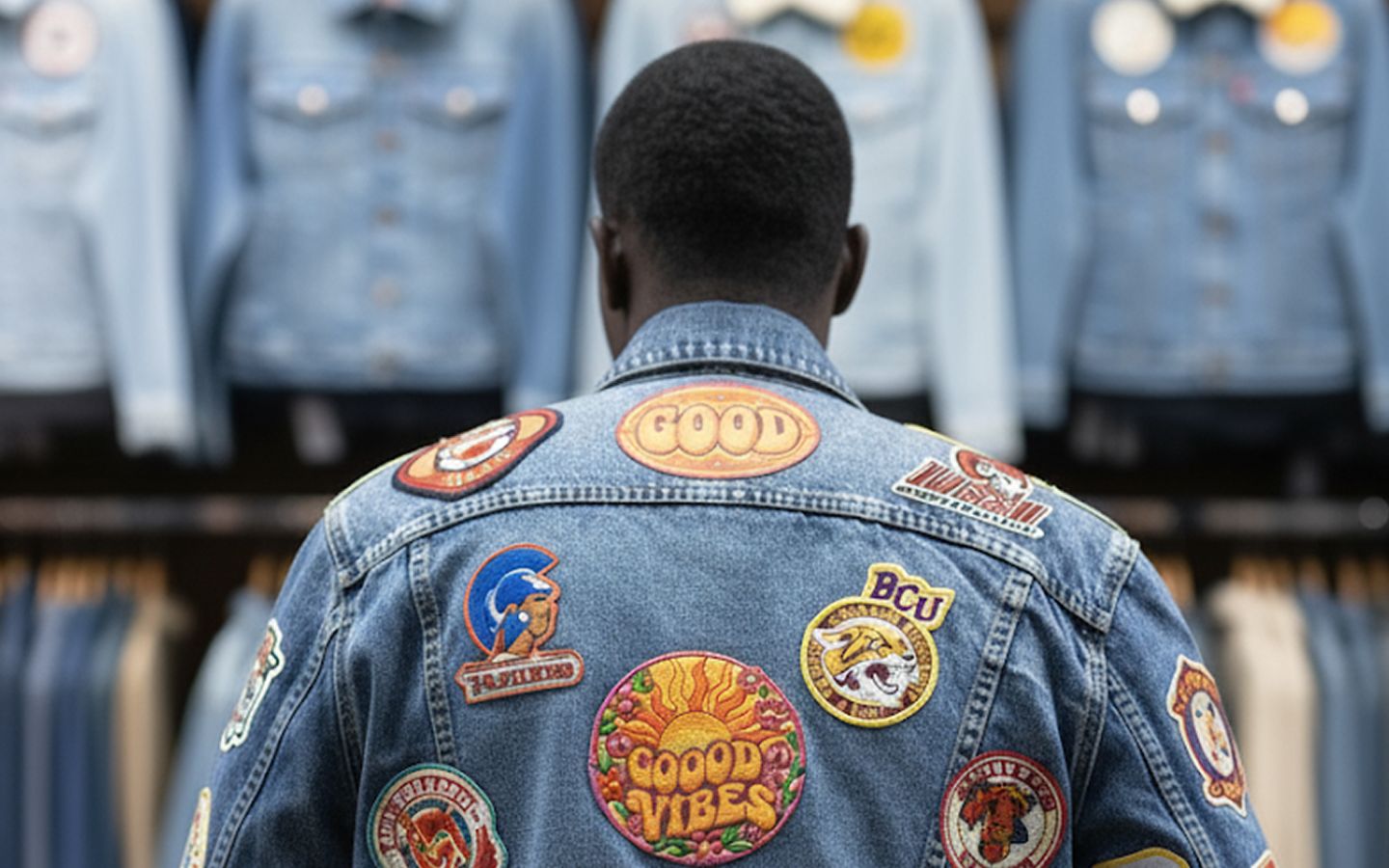
1. What changed in denim
Levi’s leaned into its archive, and with good reason. In past decades, embroidered denim jackets and jeans became personal billboards for a generation, covered in motifs that marked out tribes and movements a la Easy Rider. That rebellious streak is part of the long history of embroidered patches.
From vibrant florals stitched across back panels to understated tonal motifs at the cuff, Levi’s embroidery shows how a mass-market product can still feel one-of-a-kind. The brand proved that even icons need detail to stay relevant.
Denim embroidery works as cultural storytelling stitched into fabric.
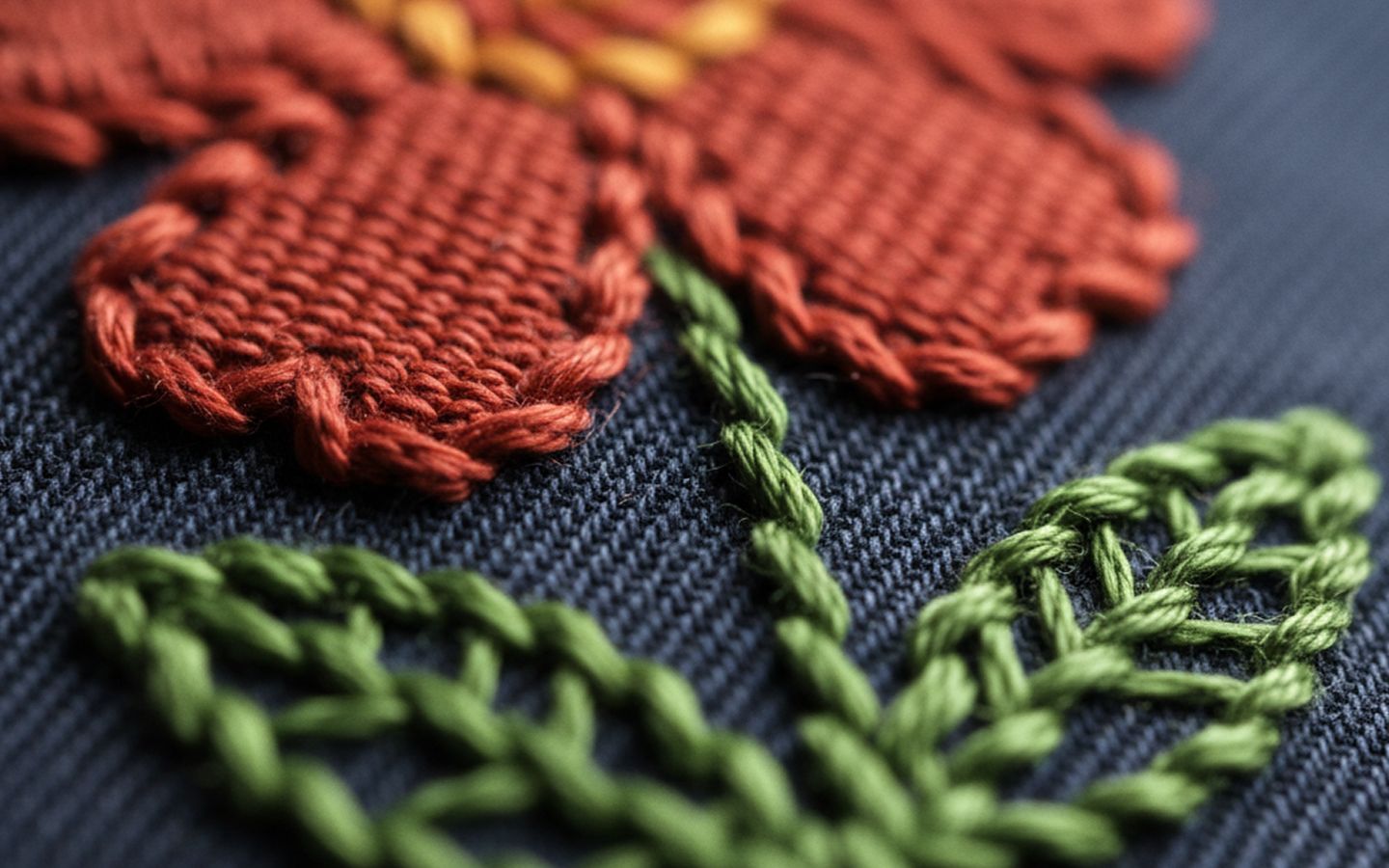
2. Craft that reads from five feet away
Denim is dense, so what is the best stitching technique? Not every method holds up under repeated or intense wear. Levi’s often uses chain stitch embroidery because it creates striking and durable lines that can be made out from a distance. Chain stitch adds depth and movement to designs, which is why vintage Levi’s jackets with chain-stitched panels are still collected religiously decades later.
For logos or intricate curves, satin fills and tighter stitch densities bring precision. The goal is always balance: enough density to hold clarity, but not so much that the fabric puckers. In custom embroidered jeans, stitch choice is the line between lasting impact and fading afterthought.
3. Placement that builds recognition
Placement is a language, and Levi’s speaks it fluently. Where a motif sits on denim changes the way it is read. Common placements include:
Back panels: large-scale statements visible from afar.
Chest or yoke: brand identifiers that feel iconic.
Coin pockets: subtle accents for insiders.
Hem or cuff: small surprises revealed in motion.
Collar or sleeve: edge details that reward close attention.
Denim patches extend the playbook. An audacious patch across the back of a jacket becomes a mark of identity. A small woven tab at the hem becomes shorthand for recognition. Even a custom embroidered jeans pocket stitch can become a brand signature when used consistently.
For anyone exploring DIY or small-batch production, knowing the easy ways to attach patches properly makes all the difference in both look and longevity.

4. Materials that elevate the story
A frequent question for creators is: how do embroidered labels change the look of a denim line? Levi’s is famous for their leather back patches, for example, but modern collections take interior details seriously too.
Clothing labels add character to the inside of a jacket. They make the garment feel crafted, even where only the wearer can see it, and that’s the point for many customers.
Creators can build on this. Woven patches carry detail for small fonts and intricate graphics. Leather patches for denim evolve with the garment, taking on patina as the fabric fades. Mixed media like embroidery combined with PVC or chenille lettering adds contrast that feels deliberate, not decorative.
At THE/STUDIO, we see firsthand how patch variety fuels storytelling. Beyond embroidered and woven, chenille patches deliver dramatic textures, PVC patches add weatherproof grit, leather brings heritage authority, and Velcro offers modularity. Choosing the right material is less about trend chasing and more about giving denim the tactile edge that customers remember.
Understanding how a custom patch is made from thread to finish helps creators make choices that balance performance with personality.
Even NASA, which is a global, nay an interstellar “brand,” has shown its mission insignias with patches. The right emblem becomes more than decoration, it becomes a legacy.

5. From idea to small-batch reality
Independent creators often ask: what thread and backing work best for leather patches for denim? Heritage brands like Levi’s can run thousands of units, but smaller teams need flexibility.
That is where low MOQ manufacturing matters. Sampling a custom patch in small runs lets you test color, placement, and wear before committing.
Backings also play a role. For denim, sew-on and heat-seal backings give permanence. Velcro opens up modularity for collections where patches can be swapped. Even hat patches drawn from the same graphic system can extend the story into headwear.
The key is iteration. By starting with small orders and experimenting with thread types, backings, and placements, brands can refine their denim line into something distinctive without risking excess inventory.
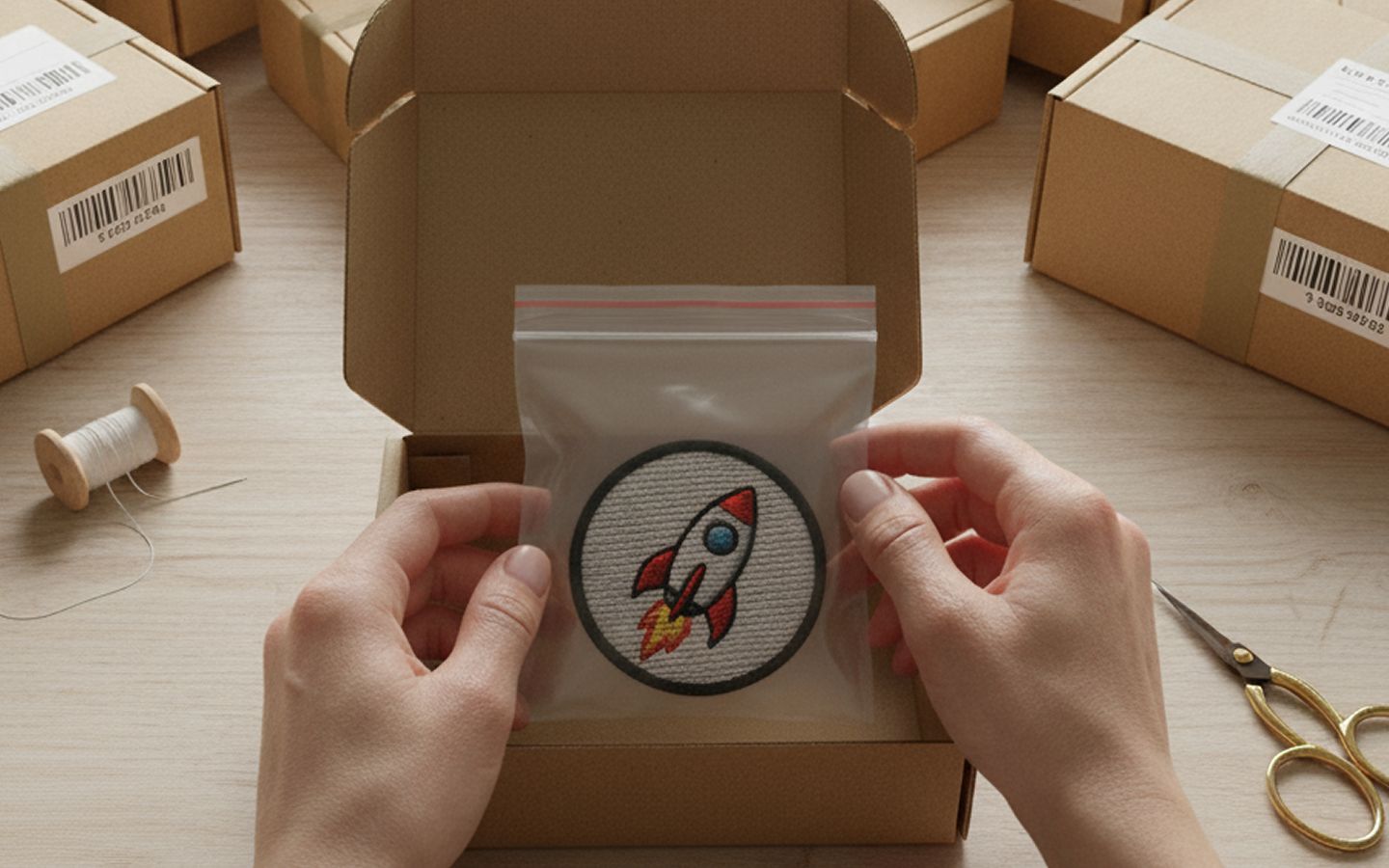
Final thoughts
Levi’s embroidered denim proves that even icons must evolve. A single stitch, placed with care, can refresh a century-old staple. For small brands, the lesson is universal: details are the most powerful design tool you have.
Choose the right stitch for the fabric. Place denim patches with intention. Use embroidered labels and leather accents to elevate interior storytelling. Start small with low MOQs, refine, then scale.
Classic detail with modern execution is not just Levi’s secret. It is a roadmap any creator can follow.


